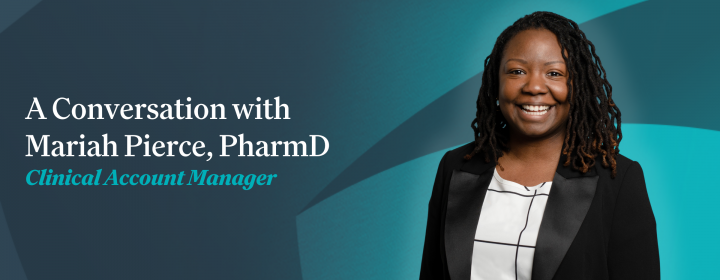
U.S. employers project their health care costs will increase by 7.7% in 2025, compared with 6.9% in 2024 and 6.5% in 2023, as revealed in a WTW survey. At the same time, the traditional pharmacy benefit management (PBM) ecosystem is broken. The pharmacy benefits model is contributing to rising costs, a lack of transparency, and reduced focus on patient needs. Addressing these issues is key to creating a more sustainable solution.
To tackle rising health care costs and improve employee well-being, employers are moving beyond traditional pharmacy benefit strategies. Rather than sticking with the conventional model that bundles medical and pharmacy benefits, many employers are considering carving out their pharmacy benefits. This approach can drive significant savings while empowering employees to make healthier choices and improve overall well-being. Self-insured employers, advisors, and benefits brokers all play essential roles in addressing these challenges and creating a more personalized approach to care that improves medication compliance and health outcomes.
Is it time to rethink the way you manage pharmacy and medical benefits? Let’s explore the potential of separating them.
Understanding Carve In/Carve Out as an Operational Management Strategy
A ‘carved-in’ health care plan bundles both medical and pharmacy benefits under a single provider, like UnitedHealth with Optum Rx or Cigna with Express Scripts. In contrast, ‘carving out’ pharmacy benefits enables employers to work directly with a PBM, offering greater control, transparency, and cost savings. While bundled models may seem convenient, they often hide costs such as spread pricing, rebate fees, and expensive formularies, limiting opportunities to lower costs or improve care.
Carving out pharmacy benefits can drive significant savings and improve employee care by offering a more tailored, transparent and focused approach.
Leveraging PBM Innovation for Lasting Impact
Switching to a carve-out model is one of the most effective ways to take advantage of PBM innovations, drive significant cost savings, and increase flexibility. Carved-out PBMs typically bring superior pharmacy benefits expertise and plan transparency, including clear pricing and predicable payments. Employers and brokers should demand predictability as the new standard of transparency. This approach focuses on better health care outcomes, maximizing the value of pharmacy benefits.
Top Three Reasons Employers Are Carving Out Pharmacy Benefits:
- Transparent Cost Savings: Carved-in plans often use hidden rebates to pad profit margins, limiting transparency. A carve-out PBM should provide clear, straightforward pricing with no hidden fees and pass 100% of rebate savings directly to employers.
- Focus on Pharmacy: Carve-in models typically prioritize medical outcomes, often overlooking pharmacy-related insights. In contrast, carve-out PBMs are fully dedicated to consulting on pharmacy changes and thoroughly reviewing relevant data to implement strategic improvements in key areas, such as formulary management.
- Plan Flexibility: With carve-out models, employers have more control to tailor plans and benefits to align with their organization’s goals.
Did You Know?
73% of employers plan to carve out pharmacy benefits over the next few years, and 27% would consider a smaller PBM that offers alternate pricing models. (Healthcare Costs at a Post-Pandemic High, US Employers Prioritize Affordability and Wellbeing, WTW 2024)
Overcoming Barriers to Adopting a Carved-Out Pharmacy Model
Reluctance to adopt a carved-out model often stems from a lack of awareness about available alternatives. Many employers aren't aware of their options, and health insurers place restrictions on carving out pharmacy benefits, making the shift difficult. High break-up fees charged by the insurer further deter employers from leaving the traditional bundled system. Despite these challenges, the potential benefits of a carved-out approach remain largely untapped.
Another barrier to breaking away from the traditional model is an apprehension to move away from the “simple” approach. Many carved-in plans are marketed as all-in-one solutions that are easier to manage. However, experience has shown that the reality is often quite the opposite. While carving out does mean separating your medical and pharmacy benefits, it does not mean that integration is lost. If anything, with the right PBM working alongside a third-party administrator (TPA), you can expect seamless plan integration and a higher level of service.
Three Questions to Ask Your Broker When Considering a Pharmacy Benefit Carve-Out
- What potential savings and financial impact could a pharmacy benefit carve-out offer?
- Can you provide strategies on possible positive clinical outcomes from switching to a carve-out model?
- Can you help identify hidden costs in our current bundled contract?
$1M in Savings
True Rx Health Strategists recently transitioned nearly 15,000 members to a carve-out pharmacy benefits management model. The switch resulted in $1 million in savings, increased plan flexibility, access to pharmacists and Health Strategists, affordable medications, personalized solutions, and optimized clinical care programs. This illustrates how the break-up fee can be worth it as the long-term value of carving out can prove to be much more significant.
Challenging the Status Quo
Tired of PBM lawsuits, rising health care costs, and the Federal Trade Commission’s demonstrative findings of overpayment for pharmacy care? The current model isn’t working. Carving out your pharmacy benefits can unlock significant savings, offering greater transparency, flexibility, and improved service. It’s time to explore breaking up with your current benefits model and choosing a carve-out PBM like True Rx Health Strategists that truly values your workforce and prioritizes employee health. This breakup won’t be hard to do.








